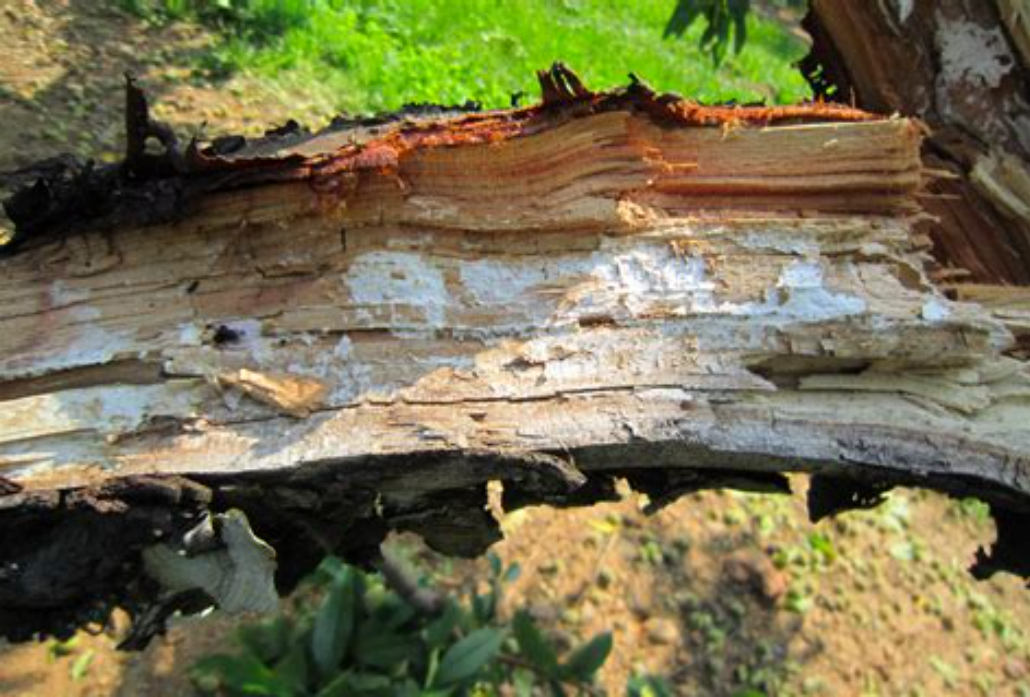Mold problems when harvesting a tree that has been on the ground too long
Common Mold & Fungal Growth in Downed Oak Wood:
1. White Rot
Appearance: White, stringy or fibrous areas inside the wood
Cause: Fungus that breaks down lignin, leaving behind light-colored cellulose
Effect: Weakens structural integrity; often found in oak left damp on the ground
2. Brown Rot (Dry Rot)
Appearance: Brown, crumbly, cube-like cracking patterns in the wood
Cause: Fungi that digest cellulose, leaving brittle lignin
Effect: Common in dead hardwoods; serious decay
3. Blue Stain Mold (Sapstain)
Appearance: Gray-blue or blackish streaks
Cause: Non-structural fungi that enter through wounds or cuts
Effect: Affects appearance but not strength; not toxic but undesirable for cooking
4. Black Mold (Aspergillus or Cladosporium)
Appearance: Black powdery or spotted surface mold, often on bark or damp ends
Cause: High moisture and limited airflow
Effect: Potential allergen; may be unsafe to burn for food use
5. Mycelial Mats (Fruiting Bodies)
Appearance: White or tan fuzzy growth; sometimes mushrooms or brackets
Cause: Indicates active fungal colonization
Effect: Clear sign the wood has been decomposing for too long
⚠️ Implications for Firewood Use
If you're cutting firewood from a post oak tree that’s been down more than 6–12 months, especially in humid conditions, it’s at high risk for internal fungal decay and mold. This kind of wood:
May not burn well (low heat output)
Could emit bad odors or excessive smoke
Is not suitable for cooking—especially if mold is present
✅ What to Do
Split the wood and inspect the inside: look for staining, softness, or odor
Avoid moldy pieces for cooking; if used for heat, burn only outdoors with good ventilation
Discard soft, punky, or visibly moldy logs—they've already begun decomposing
Example of White Rot
Example of Wet Rot
Example of Wood Decay Fungi




